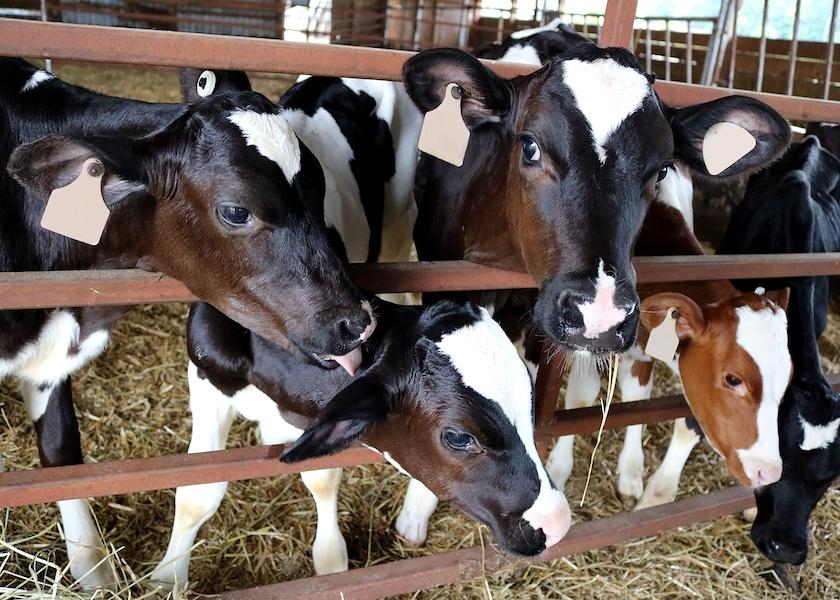A Stepped-Down Approach to Weaning

The pre-weaning stage of calf development is typically the highest-cost period in a calf’s life because of the expense of milk replacer or the use of saleable whole milk.
Dairy farmers and calf raisers have tried to adapt calves to solid calf starter as soon as possible to save money. If this is done inappropriately, however, calf raising costs can soar due to increased levels of sickness and death, notes Brad Heins, a veterinarian with the University of Georgia.
“At birth, the abomasum represents the largest compartment of the ruminant forestomach and is vital for the digestion of a milk-based diet,” he notes. “Through the preweaning phase, the rumen, reticulum and omasum all gradually develop and become integrated into the digestive process.
“Through appropriate nutrition and utilization of high-quality, texturized calf starter, the rumen papillae can be stimulated to develop and grow which will allow for digestion of lower-quality starters and forages postweaning,” he says.
If milk feeding is limited to the same level as these young animals grow, starter intake often increases to accommodate growth performance, he says. But if animals are offered free-choice milk through automated feeders or nipple bars, starter intake might be limited. “This limited starter intake may delay weaning or create additional challenges in a calf that physiologically may not be ready to wean,” Heins says.
So using a stepped down approach in milk feeding should drive additional starter intake and reduce post weaning health problems.
“Step-down weaning often begins 10 days to 14 days prior to weaning and may include a 25% to 50% reduction in milk feeding during the first few days of the process,” he says. “This reduction is usually repeated five to seven days prior to weaning in order to further reduce dependence on milk and again improve starter intake.”
Calves should be consuming 2 lb. to 3 lb. of high-quality starter three to five days from weaning. “This step-down approach may result in a calf slightly lighter at weaning than one experiencing abrupt weaning,” says Heins. But recent research shows calves managed this way have fewer health events after weaning and have both higher feed intake and average dairy gain than calves weaned abruptly, he adds.
This article originally appeared in Dairy Herd Management.







